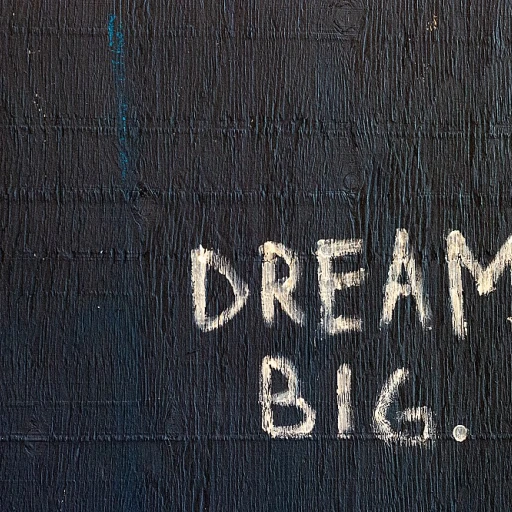
Understanding the Importance of Employee Retention
The Role of Retention in a Thriving Organization
Employee retention is a cornerstone of organizational success. It's not simply about keeping team members longer; it's about creating an environment where individuals feel valued and motivated to contribute. Leaders play a pivotal role in shaping this environment, employing their leadership skills to foster a culture of engagement and satisfaction.
When considering retention, leaders must approach the task with a clear understanding of its significance. Effective leadership interview questions often encompass an exploration of how leaders manage, inspire, and maintain their teams. This is crucial, as satisfied and engaged employees are more likely to stay and contribute positively to the company's goals.
It's important for leaders to regularly evaluate their leadership styles and the impact these have on team dynamics. Establishing a culture where feedback from team members is not only encouraged but acted upon can lead to better decision making. Leaders should be prepared to engage in panel discussions, sharing examples of successful retention strategies that have proven effective in other organizations.
Integrating retention strategies into the broader scope of professional development can also enhance employee satisfaction. By focusing on skill-building, leaders can create opportunities for advancement, which aligns with employees' long-term goals. This intersection of development and retention can significantly reduce turnover rates and strengthen the company.
Ultimately, understanding the importance of employee retention requires leaders to ask themselves the right questions and seek comprehensive answers. In doing so, they can cultivate a workplace that nurtures talent, encourages loyalty, and enhances overall organizational performance.
Key Questions Leaders Should Ask Themselves
Reflecting on Leadership and Its Role in Retention
Effective employee retention starts with leadership. Leaders need to ask themselves the right questions to understand their role in keeping team members engaged and committed. Here are some key questions that can help leaders evaluate their impact:
- What is my leadership style? Understanding your own leadership style is crucial. Are you more authoritative or collaborative? Reflect on how this affects your team members and their work satisfaction.
- How do I handle feedback? Regular feedback is essential for growth. Consider whether you create an environment where employees feel comfortable sharing their thoughts. Effective leaders not only give feedback but also actively listen to it.
- Do I prioritize professional development? Employees often leave when they don't see growth opportunities. Evaluate if you are providing the necessary resources and time for professional development within your team.
- Am I fostering a positive company culture? Culture plays a significant role in retention. Reflect on whether your actions as a leader contribute positively to the organization’s culture. Are you setting the right example?
- How do I engage with my team? Engagement is more than just meetings. Consider whether you have regular check-ins with team members and if you encourage open communication. This can be a topic for a leadership panel discussion or a senior leaders meeting.
- What is my decision-making process? Transparency in decision-making builds trust. Reflect on whether you involve your team in decisions that affect them and if you clearly communicate the reasons behind your choices.
By asking these questions, leaders can gain insights into their leadership skills and identify areas for improvement. This self-reflection is a critical step in enhancing employee retention and ensuring long-term success for the organization.
Engaging with Employees: What to Ask
Fostering Open Communication with Employees
Engaging with employees is a crucial aspect of effective leadership, especially when aiming to improve retention rates. Leaders need to prioritize open communication channels to understand the needs and concerns of their team members. Asking the right questions can provide valuable insights into employee satisfaction and help identify areas for improvement within the organization.
Key Questions to Ask Your Team
- What aspects of your work do you find most fulfilling? Understanding what motivates team members can help leaders tailor tasks and projects that align with their interests and skills, fostering a more engaged workforce.
- Are there any obstacles preventing you from performing at your best? Identifying barriers to productivity allows leaders to address issues that may be hindering employee performance and satisfaction.
- How can the organization support your professional development? By addressing professional development needs, leaders can demonstrate a commitment to employee growth, which is essential for long-term retention.
- Do you feel your feedback is valued by senior leaders? Encouraging feedback and ensuring it is considered in decision-making processes can enhance trust and loyalty among team members.
- What changes would you suggest to improve our company culture? Soliciting input on company culture from employees can provide leaders with actionable insights to create a more inclusive and supportive work environment.
Encouraging Honest Feedback
Leaders should create a safe space for employees to share their thoughts and experiences without fear of repercussions. This can be achieved through regular one-on-one meetings, anonymous surveys, or panel discussions. By actively listening to employee feedback and implementing necessary changes, leaders can improve their leadership style and enhance the overall work environment.
Leveraging Feedback for Continuous Improvement
Once feedback is gathered, it is crucial for leaders to take action. This may involve adjusting management practices, providing additional resources, or refining professional development programs. Continuous improvement based on employee input not only boosts morale but also strengthens the organization’s retention strategies, ensuring that talented team members remain engaged and committed to the company’s success.
Evaluating Company Culture and Its Impact
Evaluating Impact Through Company Culture
Understanding the influence of company culture on employee retention is a critical aspect of leadership. Leaders must ask themselves how their organization’s culture influences team members’ commitment and satisfaction. Culture forms the backbone of an organization, guiding behaviors and shaping the work environment. When evaluating the impact of your company culture, consider these questions:- How does the culture reflect our organization’s values and mission? At its core, a strong, coherent culture aligns with the company's values, providing a guiding light for team members.
- What feedback are we receiving from team members about our culture? Collecting employee feedback allows leaders to gain insights into cultural strengths and areas needing improvement. Regular team discussions can foster openness where employees feel empowered to provide honest critiques.
- Are our leadership styles enhancing or detracting from our culture? Leaders set the tone for the organization's culture. Reflect on whether your leadership style fosters a positive environment or inadvertently becomes a barrier to a healthy workplace atmosphere.
- How inclusive and diverse is our team environment? Diversity and inclusion are essential for an innovative and equitable workplace. Leaders should ensure that their management practices promote inclusivity, recognizing diversity as a strength rather than a challenge.
Addressing Professional Development Needs
Identifying Professional Growth Opportunities
Leaders must prioritize understanding and addressing the professional development needs of their team members. As highlighted previously, it's crucial for leaders to engage with employees to gain insights into their aspirations and challenges. This allows the leadership to craft effective strategies for retaining talent.
Consider these strategies for identifying and addressing professional growth opportunities:
- Engage in Regular Conversations: Allocate time to have one-on-one discussions with team members about their career goals and the skills they wish to develop. Asking open-ended questions can reveal insights into their desired growth path. For instance, asking "What new skills would you like to acquire within the next year?" can encourage employees to share their professional interests.
- Leverage Feedback Mechanisms: Encourage an ongoing feedback loop within your team. Whether through a leadership panel discussion or periodic surveys, gathering insights into employee satisfaction with current development programs is invaluable. Asking questions such as "How can our organization better support your professional goals?" can also provide meaningful feedback.
- Customize Development Plans: Tailor professional development plans to individual team members. Offering sample answers to potential career paths can guide these employees in making informed decisions about their growth. Personalized plans can boost morale and demonstrate your commitment to long-term development.
Senior leaders should also participate in these initiatives to show company-wide commitment to professional development. When leadership invests in growing skills and enhancing leadership styles, it empowers the organization and aligns with retention strategies discussed earlier.
Measuring the Effectiveness of Retention Strategies
Assessing the Success of Retention Strategies
Measuring the effectiveness of retention strategies is vital for organizations to ensure they are fostering a workplace where team members feel valued and motivated to stay long term. Leaders play a crucial role in this process, and it's essential to continually evaluate and refine strategies based on feedback and results.- Feedback Systems: Establishing robust feedback mechanisms helps in understanding employee satisfaction and identifying improvement areas. Regular feedback sessions, such as anonymous surveys and open panel discussions, can provide invaluable insights into the company culture and leadership effectiveness.
- Turnover Rate Analysis: Keeping track of turnover rates provides clear quantitative data on retention performance. Evaluate the reasons for departures through exit interviews to identify patterns or issues your organization might need to address.
- Employee Engagement Indicators: Monitor engagement levels that reflect how connected and committed employees feel towards their work. Metrics such as productivity, absenteeism, and participation in company activities can serve as indirect measures of an organization’s retention health.
- Benchmarking Against Competitors: Comparing retention metrics with industry standards can provide a perspective on whether your strategies are competitive. Participation in industry panels or forums can shed light on best practices in employee retention.
- Continuous Improvement: Based on insights gained, senior leaders should regularly review and adapt retention strategies. Holding leadership interviews and leveraging the experience of senior leaders can contribute to strategic decision making and offer new perspectives on enhancing retention.
- Professional Development Opportunities: Ensuring employees have access to development resources fosters a culture of growth and improvement. It is crucial to assess whether the professional development initiatives are aligned with both individual aspirations and organizational goals.












